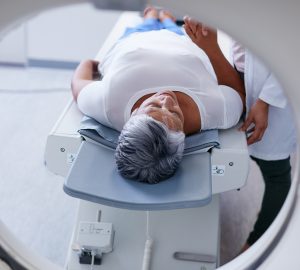Chiropractic care involves hands-on spinal manipulation and other techniques to treat musculoskeletal conditions and improve overall health and functioning. In the realm of sports medicine, chiropractic techniques can play an integral role in preventing, diagnosing, and treating athletic injuries. They can also help optimize athletic performance. This article will examine the historical context, physiological mechanisms, and practical applications of chiropractic care in enhancing sports performance and facilitating injury recovery.
Historical Context of Chiropractic Care in Sports
The foundations of chiropractic care date back to the late 19th century, as spinal manipulation techniques, were developed to alleviate back pain and improve health by correcting joint dysfunction and restoring proper nervous system functioning.
The first chiropractic adjustment was performed in 1895 by Daniel David Palmer, who helped establish chiropractic as a healthcare profession.
As sports medicine grew as a specialty in the 20th century, chiropractors became increasingly involved in working with athletes to improve performance and treat injuries. Specific chiropractic techniques like the Gonstead method, Thompson Technique, Activator Method, and Diversified Technique were developed to specifically address athletic injuries by realigning the spine and extremities.
Pioneers in sports chiropractic like Dr. James Ransom, DC made strides in establishing credibility within mainstream sports medicine and proving effectiveness through case studies with high-profile athletes.
Today, chiropractic is widely embraced in professional sports, college athletics, and youth sports. Most professional teams now have chiropractors on staff.
Understanding Sports Injuries
Athletes are vulnerable to both acute injuries from trauma as well as chronic injuries from overuse. Sprains, strains, fractures, dislocations, tendonitis, runner’s knee, tennis elbow, and various shoulder injuries are among the most common sports-related conditions treated by chiropractors.
These injuries result from direct blows, improper warm-up, overuse, poor technique, and repetitive biomechanical stress. Microtrauma to muscles, tendons, and ligaments from repetitive overloading can also lead to painful conditions like plantar fasciitis. Without proper treatment, injuries can lead to long-term complications such as chronic pain, reduced mobility, osteoarthritis, spinal degeneration, and decreased quality of life.
Chiropractic Techniques and Their Applications in Sports
Chiropractors employ numerous hands-on techniques to both treat athletic injuries and enhance athletic performance:
- Spinal manipulation through precise movements realigns joints and vertebrae to decrease pain and improve mobility by restoring optimal motion and flexibility. High velocity, low amplitude (HVLA) manipulation is often used.
- Soft tissue therapy techniques like Active Release Technique relieve muscle tension, reduce inflammation, break down scar tissue, and accelerate healing by increasing blood flow.
- Corrective and therapeutic exercises strengthen unstable joints, improve proprioception, and reinforce proper biomechanics and movement patterns.
- Joint mobilization techniques like the Graston Technique free up restricted joint movement and realign connective tissue through specialized instruments.
- Customized, multi-modal treatment plans intelligently combine multiple chiropractic techniques including manipulation, massage, rehabilitation exercises, lifestyle advice, and nutritional counseling.
The Role of Chiropractic Care in Injury Prevention
Through comprehensive assessments and routine sports physicals, chiropractors can identify anatomical and biomechanical deficits in athletes to reduce injury risk:
- Postural, gait, and range of motion assessments analyze neuromuscular movement patterns to identify inefficiencies, asymmetries, and imbalances.
- Pre-participation physical exams thoroughly assess overall joint health, muscle strength, cardiovascular fitness, and functioning to detect injury-prone conditions.
- Chiropractors also provide training recommendations, dynamic warm-up and conditioning programs, and appropriate equipment recommendations tailored to the athlete’s sport and position.
Chiropractic Care for Injury Recovery and Rehabilitation
Chiropractic treatment stimulates the body’s natural healing processes to accelerate the post-injury recovery timeline. Gentle yet targeted manual techniques stimulate blood flow to injured muscles, ligaments, and other tissues to supply restorative nutrients and oxygen.
Specific protocols utilizing in-office and at-home techniques are tailored to common athletic injuries such as sprains, fractures, dislocations, and repetitive stress injuries. For example, gentle mobilization and low-force manipulation can accelerate recovery from ankle sprains.
Chiropractic care, including Non-Surgical Spinal Decompression, at Crist Chiropractic facilitates recovery from sports surgery and rehabilitation by ensuring optimal joint mobility and muscular function. Custom-designed chiropractic rehabilitation programs progressively restore range of motion, flexibility, and functional strength.
These programs utilize controlled motions and resistive exercises, tailored specifically to meet individual recovery needs. Nutrition advice, therapeutic massage, and other complementary therapies are integrated into the rehab process, offering a holistic approach to healing.
Enhancing Athletic Performance through Chiropractic Care
Many benefits of chiropractic care allow athletes to achieve heightened performance:
- Improved mobility and range of motion in the spine and extremities permit greater agility, stride length, arm rotation, and overall movement efficiency.
- Chiropractic enhances contractile power, coordination, and reaction speed by optimizing communication between the central nervous system and the musculoskeletal system.
- Identifying and correcting subtle biomechanical limitations and asymmetries helps eliminate compensatory movement patterns that hamper high-level performance.
- Optimizing the musculoskeletal system through chiropractic adjustments allows athletes to activate muscle fibers more effectively during competition.
Challenges and Controversies in Sports Chiropractic
While numerous studies point to the benefits of chiropractic care in athletic preparation and sports rehabilitation, some challenges remain:
- More large-scale research is still needed to assess efficacy and quantify results compared to other interventions conclusively. Most studies to date have small sample sizes.
- Safety concerns occasionally arise regarding potential adverse effects from forceful spinal manipulation, especially vertebrobasilar complications in the neck. Clear protocols are needed to identify at-risk individuals.
- Standards of practice must align closely with established sports medicine protocols regarding assessment baselines, injury classifications, and management approaches.
- More robust evidence is still needed to support integration with conventional physical therapy and medical approaches and determine the optimal timing of chiropractic interventions.
Conclusion
In conclusion, chiropractic techniques serve a vital role in preventing and treating athletic injuries. Skilled chiropractic care helps optimize neuromuscular functioning and biomechanics to enhance sports performance. As the field continues to evolve, chiropractic care will become firmly established as a leading component of integrative sports medicine.
Further research and advances in technology will continue to solidify the central role of chiropractic in athletic health, injury recovery, and maximizing human performance potential.









